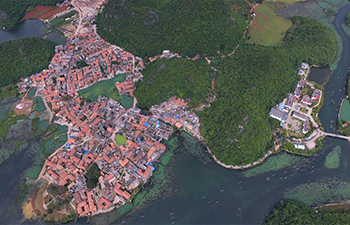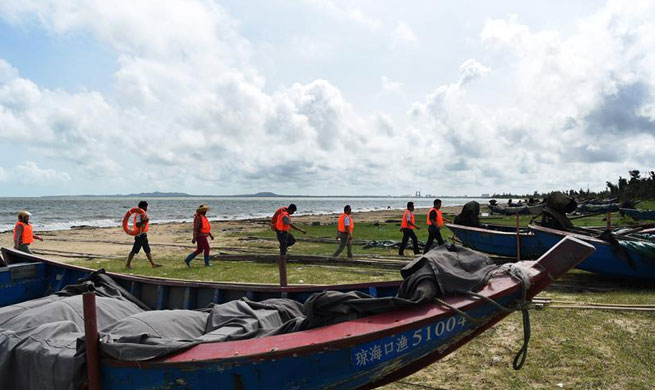SAN FRANCISCO, July 23 (Xinhua) -- A new global analysis of forest habitat loss and wildlife extinction risk shows that species most at risk live in areas just beginning to see the impacts of human activities such as hunting, mining, logging and ranching.
In a paper published in the latest issue of the journal Nature, the researchers argue that these intact areas deserve higher priority for limited conservation dollars than areas already impacted heavily by human activity even though species are also threatened in the impacted areas.
These conclusions were based on analyzing global datasets of forest habitat assembled by Matthew Hansen at the University of Maryland in the United States and categories of extinction risk for 19,432 vertebrate species, the so-called Red List, maintained by the International Union for the Conservation of Nature.
Hansen's data indicate that forest is continuing to be lost at about 1.5 million square kilometers, or 371 million acres, per year. Most of those changes occur in the tropics. South American rainforests account for nearly half of global forest loss. In total, the new analysis shows that 37 percent of the world's forests have been converted to other land uses.
"It should be quite obvious that forest loss increases the risk of species being listed," Matthew Betts, lead author and professor in the College of Forestry at Oregon State University (OSU), was quoted as explaining in a news release from OSU. "But our work provides the first global quantitative link between forest loss and forest species decline."
In addition, "we have seen declines in species in landscapes that have already lost a massive amount of habitat," he said. "But we found much more support for what we call the initial intrusion hypothesis. It's the initial hit caused by roads going into tropical forests and the human activities that follow that is most substantial. These are also the spots with the greatest sheer numbers of species."
In research by Betts and his colleagues in Costa Rica and elsewhere, the team has studied the impact of forest clearing on hummingbird pollinators and on other bird species. It's likely, he added, that heavily impacted areas have already gone through what scientists call an "extinction filter." Species that are sensitive to development may have already been eliminated. High-risk hot spots for forest biodiversity, the researchers wrote, exist in southeast Asia, particularly Borneo, a giant, rugged island in the Malay Archipelago, the central-western Amazon and the Congo basin in Africa.
Population growth, bushmeat hunting and trapping, and resource extraction may fuel future extinction risks in such areas, noted Betts.
While there is an ongoing debate among scientists and policymakers focusing on whether conservation programs should prioritize forests already affected by development, Betts stated that "our paper suggests that we would be helped by having these intact forest landscapes well protected."
Dedicating some areas to intensive production may allow other areas to be preserved as habitat, said Taal Levi, co-author and assistant professor in Fisheries and Wildlife at OSU. "There are many potential benefits to concentrating our environmental impact by intensifying drivers of land-use change, such as agriculture and forestry, in exchange for gazetting large remote undisturbed reserves. A disproportionately large impact arises from the first disturbance to forests."

















